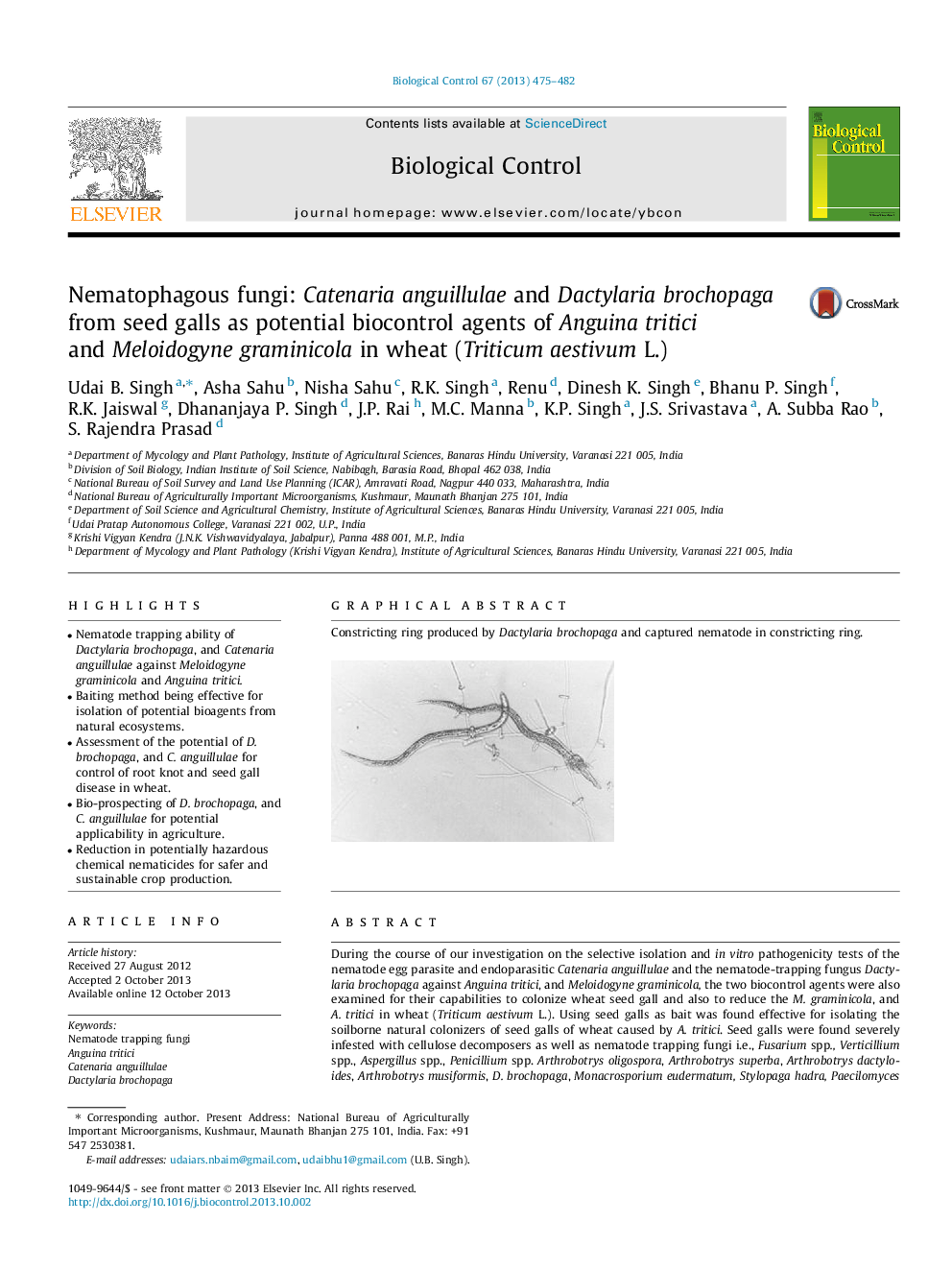| Article ID | Journal | Published Year | Pages | File Type |
|---|---|---|---|---|
| 6372703 | Biological Control | 2013 | 8 Pages |
â¢Nematode trapping ability of Dactylaria brochopaga, and Catenaria anguillulae against Meloidogyne graminicola and Anguina tritici.â¢Baiting method being effective for isolation of potential bioagents from natural ecosystems.â¢Assessment of the potential of D. brochopaga, and C. anguillulae for control of root knot and seed gall disease in wheat.â¢Bio-prospecting of D. brochopaga, and C. anguillulae for potential applicability in agriculture.â¢Reduction in potentially hazardous chemical nematicides for safer and sustainable crop production.
During the course of our investigation on the selective isolation and in vitro pathogenicity tests of the nematode egg parasite and endoparasitic Catenaria anguillulae and the nematode-trapping fungus Dactylaria brochopaga against Anguina tritici, and Meloidogyne graminicola, the two biocontrol agents were also examined for their capabilities to colonize wheat seed gall and also to reduce the M. graminicola, and A. tritici in wheat (Triticum aestivum L.). Using seed galls as bait was found effective for isolating the soilborne natural colonizers of seed galls of wheat caused by A. tritici. Seed galls were found severely infested with cellulose decomposers as well as nematode trapping fungi i.e., Fusarium spp., Verticillium spp., Aspergillus spp., Penicillium spp. Arthrobotrys oligospora, Arthrobotrys superba, Arthrobotrys dactyloides, Arthrobotrys musiformis, D. brochopaga, Monacrosporium eudermatum, Stylopaga hadra, Paecilomyces spp., and C. anguillulae. Co-inoculation of D. brochopaga DBS-105, and C. anguillulae CAS101 significantly reduced the root knot and seed gall in wheat and increased the plant growth parameters including length, and dry weight of root and shoot as well as yield attributing characters like spike length; number of seed per spike, test weight etc. under greenhouse conditions as compared to pathogen challenged plants without any bioagents/chemical nematicide. These bioagents have the potential to enhance production of quality seeds of wheat being free from hazardous pesticides and thus, can further be developed into marketable formulations in order to promote eco-friendly and sustainable means of crop production.
Graphical abstractConstricting ring produced by Dactylaria brochopaga and captured nematode in constricting ring.Download full-size image
